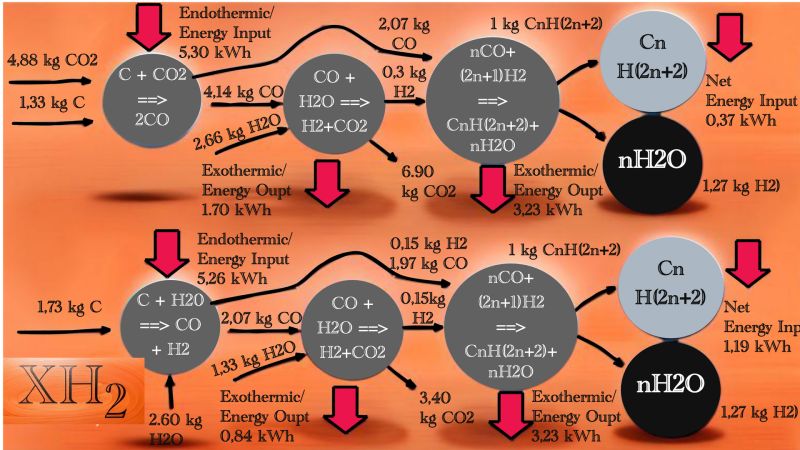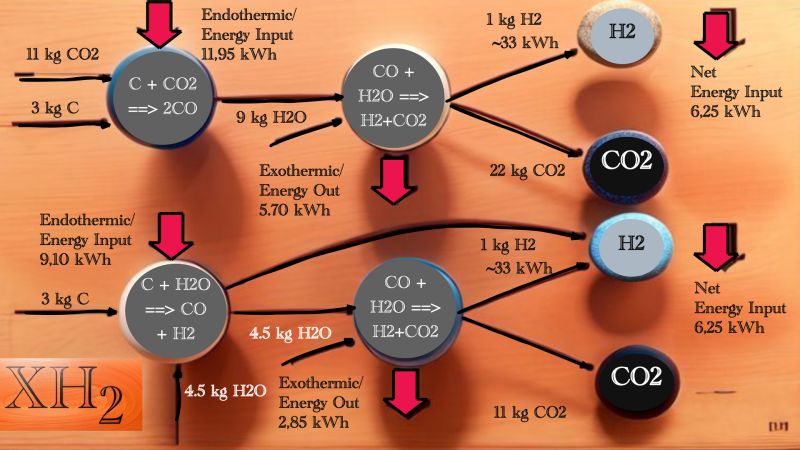Regenerative Fuels, How Much Does It Cost?
Advanced Renewable
Wed , 13 Mar 2024 17:11 WIB


Since we at the Advanced Renewable Organization (ARO) introduced the concept of Regenerative Energy, the question that haunts us is what the selling price of Regenerative Energy will be, or what is particularly urgent is what Regenerative Fuels (RF) will be. Because if in the end the price is still more expensive than fossil fuels, people will still prefer to use fossil fuels while they are still available.
As fossil fuels will still be present on earth for decades to come, this means that emissions from burning fossils will continue to exist. The most effective way to get people to abandon fossil fuels is if we can provide fuels that is not only cleaner, but also cheaper.
We can only answer questions regarding the selling price of this RF after we have carried out a series of trials and modeling, including the mass and energy balance for the RF production process. There are at least 4 models that we have developed and summarized in the two graphs below, the first is hydrogen production - with 2 different raw materials, namely charcoal alone and charcoal plus CO2. The second is hydrocarbon fuel, for this model we chose gasoline, specifically C10H22 - which is in the middle of the hydrocarbon fuel distribution, there are also 2 choices of raw materials, charcoal only and charcoal plus CO2.
From the results of this modeling, we can estimate relatively accurately the price of this RF. For Hydrogen, whether using charcoal alone or charcoal plus CO2 as raw materials, the results are more or less the same - because the C element, both from charcoal and CO2, is only used as a carrier to deliver H2. Per 1 kg of hydrogen, 3 kg of charcoal and 11 kg of CO2 are needed (if the choice is to also use CO2), with the same energy requirement of 6.25 kWh.
For hydrocarbon fuel, if we only use charcoal as the raw material, per 1 kg of fuel product, 1.73 kg of charcoal and 1.18 kWh of energy are needed. When using charcoal and CO2 as raw materials, the charcoal requirement becomes 1.33 kg and the energy requirement drop to to 0.39 kWh.
Assuming the price of charcoal is US$ 200/ton, electricity is US$ 0.1/kWh and these 2 components constitute 40% of the selling price of this RF fuels, then the selling price of hydrogen at the production location will be around US$ 3.00/kg. The selling price of RF using charcoal alone is around US$ 0.90/liter, and if the raw materials are combination of charcoal and CO2, the selling price will drop to just US$ 0.60/liter.
So even without subsidies, this clean fuel will be able to compete with fossil fuels, it just depends on who or which country will develop this RF first. Apart from becoming energy independent, energy security will increase because the raw materials must be available in every country. The country will also become very competitive in its industry - because fuel costs are currently one of the determinants of the competitiveness of industry in each country.
Other Post
Green Trees for Green Wealth
Mar 13, 2024
Hidrogen Hijau Baru: BioHidrogen Regeneratif
Mar 13, 2024
Waste Valorization To The Max
Mar 13, 2024
Regenerative Energy Ecosystem
Mar 13, 2024
Gas On Demand, A Disruptive Gas Delivery
Mar 13, 2024
Categories
Renewable Energy






Please register first!
For post a new comment. You need to login first. Login
Comments
No comments